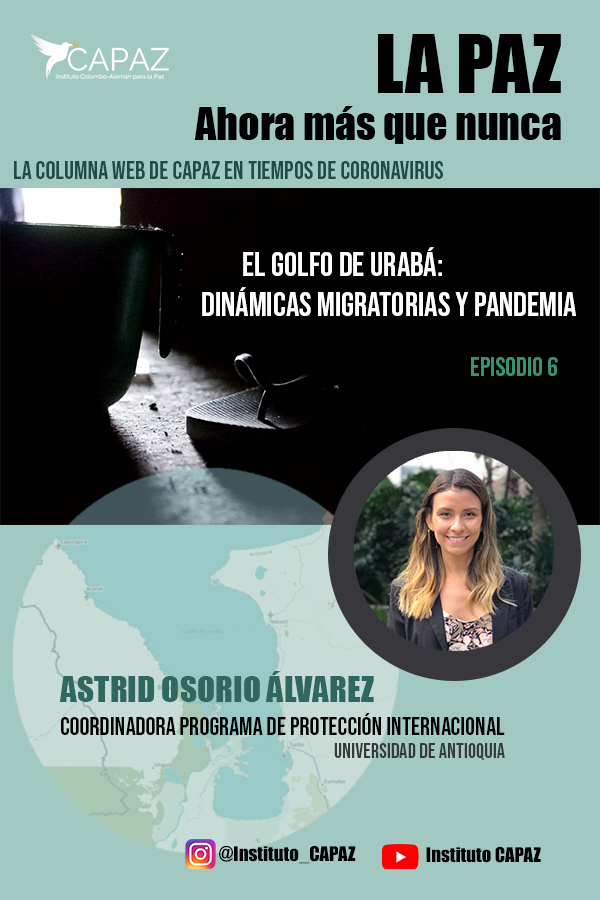
The Gulf of Urabá: migratory dynamics and the pandemic

Migration from Venezuela has been receiving much attention in Colombia, Latin America, and the world for years. In contrast, migratory movements on the border between Colombia and Panama are almost invisible, but are complex for various reasons, which today, are compounded by the COVID-19 pandemic.
In the sixth episode of the CAPAZ web video-column on peace in times of COVID-19, entitled: “El Golfo de Urabá: dinámicas migratorias y pandemia” (The Gulf of Urabá: migratory dynamics and the pandemic), researcher and coordinator of the international protection programme run at Universidad de Antioquia, Astrid Osorio Álvarez explains how and why migration takes place in the Gulf of Urabá region. She also describes how the migrant population in transit copes with the COVID crisis.
Episode 6 – La paz, ahora más que nunca (in Spanish)
The geographic junction between Panama and the departments of Chocó and Antioquia in Colombia has been a strategic and historical pole of natural and cultural diversity with economic potential, but with complex social, economic and political dynamics, given its a long-standing legacy as a stage for Colombia’s armed conflict.
The migrant population –of approximately 60,000 people in the last four years— that passes through this region comes from Africa, Haiti, Cuba, Sri Lanka and also Venezuela. They aim to reach the countries to the north of the Americas, but have come to a standstill during the pandemic with the border closures imposed. They wait in shelters and tents, with little food and protection against the virus and, in this rich and forgotten border area between Colombia and Panama, they also wait in hope for a better future.
CAPAZ has been publishing the episodes of its video column called: “La paz, ahora más que nunca” since April 2020. Follow this and the other episodes of the series on Instagram @instituto_capaz and the CAPAZ YouTube channel.
(NW Text: Claudia Maya. English version: Tiziana Laudato)



